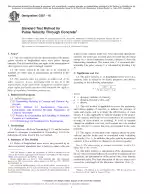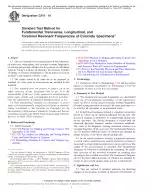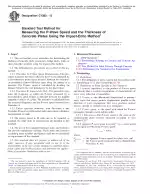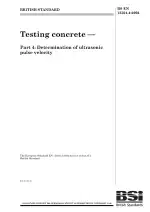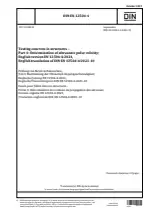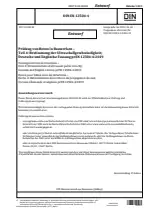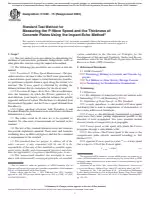ASTM C597-16 PDF Download
Standard ENStandard Test Method for Pulse Velocity Through Concrete
Also Known As:
ASTM C597-16 is a standard test method that determines the pulse velocity of longitudinal stress waves through concrete. The pulse velocity is related to the elastic properties and density of the concrete. This test method is used to assess the uniformity and relative quality of concrete, detect voids and cracks, evaluate the effectiveness of crack repairs, and indicate changes in the properties of concrete.
The degree of saturation of the concrete affects the pulse velocity, so this factor must be considered when interpreting the test results. The pulse velocity is independent of the dimensions of the test object as long as reflected waves from boundaries do not complicate the determination of the arrival time of the pulse. The accuracy of the measurement depends on the operator's ability to determine the distance between the transducers and the equipment's ability to measure the pulse transit time accurately.
The test results obtained from this method should not be used as a means of measuring strength or establishing compliance with the modulus of elasticity in the design. For determining the dynamic modulus of elasticity of field concrete, the longitudinal resonance method in Test Method C215 is recommended. The procedure is applicable in both field and laboratory testing regardless of the size or shape of the specimen, within the limitations of available pulse-generating sources.
It is important to note that pulse velocity in steel is higher than in concrete, so measurements near reinforcing steel should be avoided whenever possible.
| Descriptors | ultrasonic test, longitudinal stress wave propagation, ultrasonic pulse velocity,Concrete,Acoustic Properties,Propagation,Ultrasonic Examination |
| ICS Codes | 91.100.30 - Concrete and concrete products |
| Language(s) | English |
| File Size | 102.4 KB |

